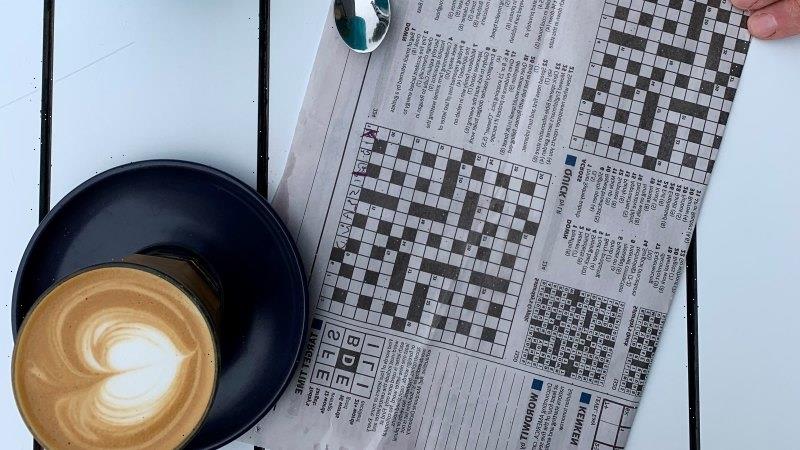“This is not a toy!” warns the book. The flyleaf adds, “It is just possible you may pick up this book thinking of it as a present for the younger children. Will you please do us one favour – in the name of humanity?”
Refrain, in a word. Think twice. Keep the book from younger hands, as cross words (sic) are not for tender minds. A tangerine hardback, with time-foxed pages, The Cross Word Puzzle Book (First Series) was published by Hodder and Stoughton in 1925, 12 years after the crossword itself was invented.
Liz Williams made the discovery, sifting her late mum’s possessions in Echuca. (“We have many, many books of hers, her family and of her late brother. They were avid readers and collectors, and I’m no better!“) But this puzzle book leapt out – for several reasons.
One was the cover, the tangerine brighter for a misplaced jacket. Then there was the warning, scaring the kids away. Yet the real curio was the prologue, some 13 pages of detailed instructions. Imagine that, a world where crosswords needed explaining, like a pamphlet telling cyclists where to sit while riding. Or the words “Hold Here” adorning a lollipop stick.
“Cross word puzzles are a great deal simpler to explain than to solve,” begins the tutorial. “And as the quickest way to explain any game is by demonstration, let us do a cross word example together.”
By now you’ve noticed the two-word nature of “cross word” – no hyphen, no fusion – which also suggests the volume’s vintage. Arthur Wynne, the Liverpool chap to create the format for The New York World in 1913, had called his baby word-cross.
How the crossword came to be black and white.
Which didn’t last long, a matter of weeks. A bit like Zantar – Edgar Rice Burroughs’ initial name for his vine-swinging hero – the label flip-flopped into its household name. The hyphen came and went. Even in 1925, the genre migrating to British shores, that hesitant hyphen loitered. That alien quality too, embodied by the need to add a user’s manual.
“Each white square represents a single letter. The puzzle is to find out what letter belongs in each white square.” Captain Obvious deserves a writing credit, the same scribe to say: “You will notice numbers in many of the white squares, corresponding to numbers in the lists of “horizontals” and “verticals” alongside.”
And so it goes, from the interlocking principle to the recommended pencil, from symmetry to the “imagined ring of black squares surrounding the puzzle”. Doubtless the sequel needed fewer instructions, just as Edition 3 would erase the gap in cross word. At first, when Liz sent scans of her relic, my impulse was to chuckle. The preamble seemed ridiculous. Redundant. Yet the more I dwelt on its earnest phrases, the more I cherished them.
Back in Stratford Primary, a tweenage Willy Shakespeare had no hope of writing until he mastered his quill licence. Even Emma McKeon trod Wollongong water before snagging four Tokyo golds. Wonders take work. Davy’s lamp lit the way for Edison’s bulb.
Hence my newfound fondness for those 13 pages, the foreword the footing of the modern edifice that is crosswording. (Yes, the pastime has been verbed since 1913.) While the rules are now implicit, the same step-by-step has emboldened new setters to push the genre further, each extrapolation demanding new rules, each generation pushing the envelope outward, letter by letter.
That’s the unsung miracle Liz Williams unearthed in Echuca, the anticipated future standing foursquare on a Georgian explainer. The book is no toy, true. Instead it’s a seed, the first turned sod of a grand construction.
www.davidastle.com
twitter.com/dontattempt
The Booklist is a weekly newsletter for book lovers from books editor Jason Steger. Get it delivered every Friday.
Most Viewed in Culture
From our partners
Source: Read Full Article

